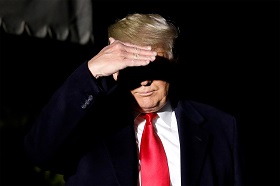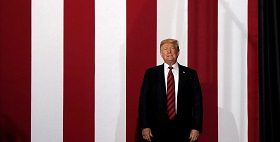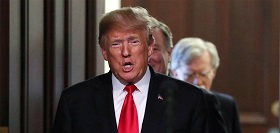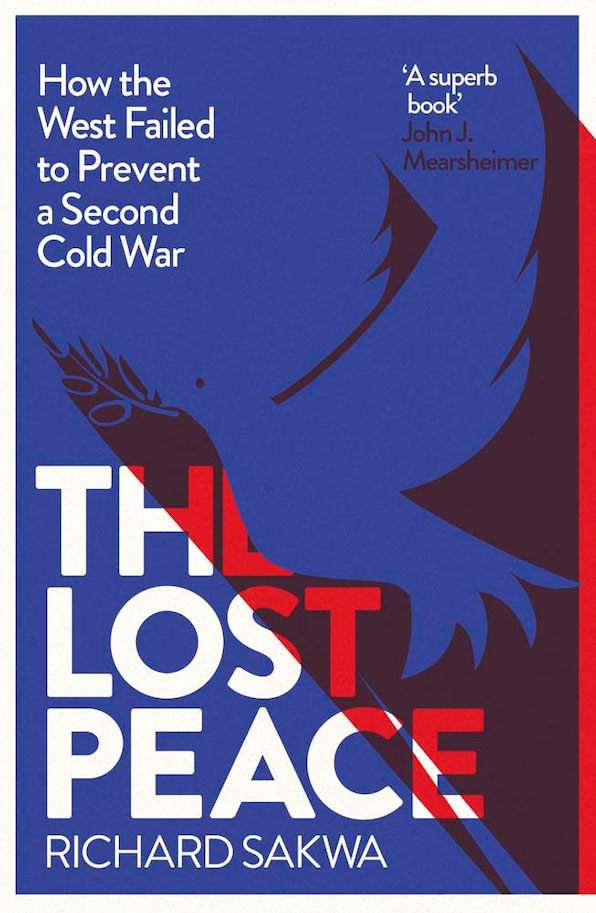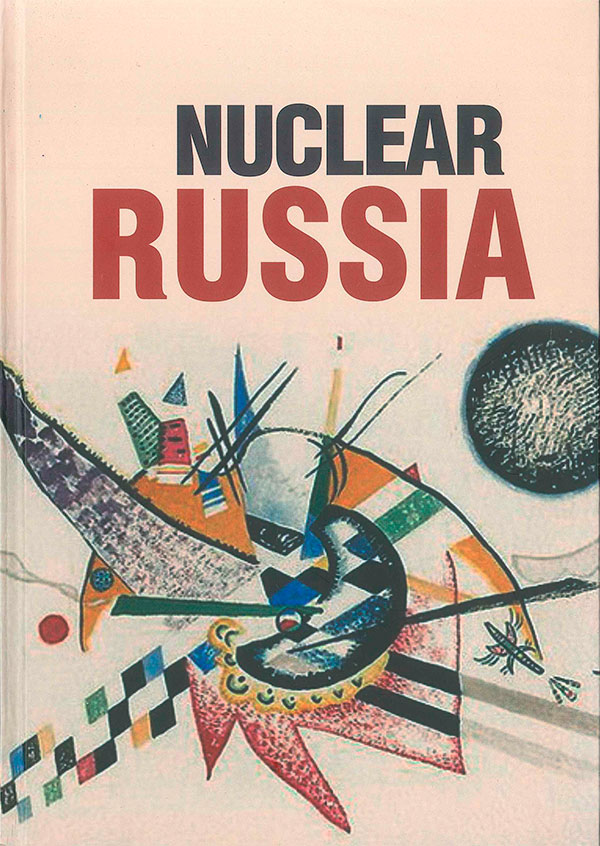What will Trump’s increasingly likely second term mean for America and the rest of the world?
First of all, Trump 2.0 is the final verdict against the old American elite. If Trump wins in 2020, no further appeal is possible. Indeed, in the name of confronting Trump and his “challenge” the old US establishment carried out a truly total mobilisation, gathering under its banners everyone fit for recruiting, from Michael Bloomberg to George Soros, from Hollywood celebrities to Washington bureaucrats, from leading liberal media to the most influential think tanks. If this broad-based political coalition does not stop Trump in the November elections, then the defeat of the old elite will become final and unconditional. In November 2016, the old American establishment lost the general battle, and in November 2020 it risks losing the war.
Of course, Trump 2.0 is a mortal blow to the US Democratic Party, at least in the form in which the party has existed in recent decades. Their defeat in 2020 will mean the final collapse of the Democratic party ideology, party strategy, party organisation and party cadre policy, established during the tenure of Democratic presidents Bill Clinton and Barack Obama, which changed little after the 2016 elections. Democrats will pay full price for their stubborn unwillingness to seriously understand their problems, for replacing honest and frank internal party discussions with ridiculous references to “Putin’s role” in Clinton’s 2016 defeat.
Trump 2.0 is also a shock for many US allies, especially in Europe, where America’s partners had hoped that Trump 1.0 had been some kind of annoying accident of history, the result of an unpleasant error in the US political system, or a temporary deviation from some fundamental norms. Trump 2.0, which recently seemed impossible, means that the long-awaited spring will not come for another four years. And inevitably a terrible doubt creeps into the heads of the discouraged allies: will it come at all, this spring?
Moreover, Trump 2.0 is an additional risk to stability in the world, another blow of a sledgehammer on the shaky construction of a liberal world order. Trump 2.0, unlike Trump 1.0, will have the undoubted privilege to ignore fluctuations in public opinion within the country and be guided only by his own, sometimes extremely aggressive instincts.
What does Trump 2.0 mean for Russia? History shows that it is always easier for Moscow to deal with a strong American president than with a weak one. But let’s not forget that even if Trump 2.0 completely eliminates the opposition in Congress and suppresses bureaucratic sabotage by the “deep state,” it is unlikely to mark a new era in US-Russia relations. Moscow will not be able to give Trump 2.0 all that Trump 1.0 insistently sought from it. The relations between Russia and the United States in the era of Trump 2.0 will not fundamentally differ from relations in the era of Trump 1.0.
For the United States, for the European Union, for Russia, for China and for many other leading players in world politics, the great turning point, most likely, will not be in 2020, but in 2024.
US history knows just a few examples of how an incumbent president struggling for re-election is defeated by an opposition candidate. These votes of no confidence should not be attributed to the general rules of American democracy, but to exceptions to the rules. Such infrequent exceptions are always associated with special circumstances.
Most often, the defeat of an incumbent president is the result of a deep economic crisis, for which society blames him as the leader of the country. Another factor hindering re-election may be the country’s involvement in a long war involving significant losses which, as a result, is unpopular. The third factor is the unexpected appearance on the political scene of a strong, independent candidate, the formal or actual split of the ruling party, the dispersal of the incumbent president’s electorate, and, as a result, the opposition candidate’s coming to power.
At the start of the current presidential election, none of these circumstances apply. The US economy is showing very good results. No matter how Trump’s opponents attempt to prove that the economy prospered despite the president rather than due to his policies, in the eyes of voters, the arguments of the political opposition are unconvincing. Trump also fulfilled his promise, made four years ago, not to get involved in new military adventures abroad, resisting the temptation to start large-scale military operations against Iran, North Korea or Venezuela. No split is expected within the Republican Party either, which cannot be said about the inconsistent ranks of the Democrats.
Of course, in the eight remaining months before the election, a variety of surprises could occur. But, apparently, Donald Trump’s chances of reelection in November are very high, and they continue to grow literally with every passing week. Attempts to impeach the president only united the Republican majority in the Senate. The Democratic Party very clearly demonstrated its unpreparedness for the elections, even at the first primaries in Iowa. And in the international arena, Trump recently managed to conclude an extremely important Phase 1 agreement between the United States and China to resolve bilateral trade disputes.
What will Trump’s increasingly likely second term mean for America and the rest of the world? First of all, Trump 2.0 is the final verdict against the old American elite. After the 2016 elections, one could still argue that Trump won not only by chance, but due to a unique combination of circumstances, that he turned out to be a “dark horse” that no one took seriously, and that self-confident political heavyweights from both parties simply “missed” his victory. In other words, the sentence of voters allowed the establishment the right to appeal.
If Trump wins in 2020, no further appeal is possible. Indeed, in the name of confronting Trump and his “challenge” the old US establishment carried out a truly total mobilisation, gathering under its banners everyone fit for recruiting, from Michael Bloomberg to George Soros, from Hollywood celebrities to Washington bureaucrats, from leading liberal media to the most influential think tanks. If this broad-based political coalition does not stop Trump in the November elections, then the defeat of the old elite will become final and unconditional. In November 2016, the old American establishment lost the general battle, and in November 2020 it risks losing the war.
Of course, Trump 2.0 is a mortal blow to the US Democratic Party, at least in the form in which the party has existed in recent decades. And for reasons other than the commonly cited age-related ones, these elections should be the last for many Democratic also-rans, including Joe Biden, Bernie Sanders and Elizabeth Warren. Their defeat in 2020 will mean the final collapse of the Democratic party ideology, party strategy, party organisation and party cadre policy, established during the tenure of Democratic presidents Bill Clinton and Barack Obama, which changed little after the 2016 elections. Democrats will pay full price for their stubborn unwillingness to seriously understand their problems, for replacing honest and frank internal party discussions with ridiculous references to “Putin’s role” in Clinton’s 2016 defeat.
Trump 2.0 is also a shock for many US allies, especially in Europe, where America’s partners had hoped that Trump 1.0 had been some kind of annoying accident of history, the result of an unpleasant error in the US political system, or a temporary deviation from some fundamental norms. For most liberal Western leaders, the only possible strategy since mourning November 2016 has been to simply survive Trump, just like Europe experiences a cold and rainy winter in anticipation of the inevitable spring. Trump 2.0, which recently seemed impossible, means that the long-awaited spring will not come for another four years. And inevitably a terrible doubt creeps into the heads of the discouraged allies: will it come at all, this spring?
Moreover, Trump 2.0 is an additional risk to stability in the world, another blow of a sledgehammer on the shaky construction of a liberal world order. It is possible that the need to factor in the upcoming elections had a deterrent effect on the impulsive and assertive behaviour of the president in international affairs. Trump 2.0, unlike Trump 1.0, will have the undoubted privilege to ignore fluctuations in public opinion within the country and be guided only by his own, sometimes extremely aggressive instincts.
Of course, very much also depends on the outcome of the US Congressional election this year. If the Democrats manage to at least maintain control over the House of Representatives, or are able to obtain a majority in the Senate as well, the bipartisan struggle will take the form of a tough confrontation between the executive and legislative branches of government, while Trump 2.0 will also be energetically surrounded by legislative flags and slingshots, which now limit the actions of Trump 1.0. In any event, it is difficult to imagine that the hopeless lag in the presidential race will not affect the Democrats’ chances to succeed during the Congressional elections.
What does Trump 2.0 mean for Russia? History shows that it is always easier for Moscow to deal with a strong American president than with a weak one. Therefore, Russia’s interests are best served by the resolution of the current acute political crisis in the United States as soon as possible and the restoration of manageable and predictable American foreign policy, with or without Trump 2.0.
But let’s not forget that even if Trump 2.0 completely eliminates the opposition in Congress and suppresses bureaucratic sabotage by the “deep state,” it is unlikely to mark a new era in US-Russia relations. Moscow will not be able to give Trump 2.0 all that Trump 1.0 insistently sought from it. It will not side with the United States in its conflict with China, it will not support Washington’s position on Iran, it will not support the American “deal of the century” for the Israeli-Palestinian conflict, and it will not sacrifice the fate of Nicolás Maduro and all of Venezuela to the discretion of the White House. Therefore, the relations between Russia and the United States in the era of Trump 2.0 will not fundamentally differ from relations in the era of Trump 1.0.
Trump 2.0, be he strong or weak, triumphant or cornered, benevolent or hostile – will in any case become a symbol of the end of the old era, but not a symbol of the beginning of a new one. For the United States, for the European Union, for Russia, for China and for many other leading players in world politics, the great turning point, most likely, will not be in 2020, but in 2024. The “Moment of Truth” in world politics, the time of generational change in political and economic elites, the time for revising national values and priorities, the time for the beginning of the transformation of the international system has been postponed by another four years.
First published in the Valdai Discussion Club.


